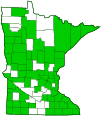common wood nymph
(Cercyonis pegala)
Conservation • Description • Habitat • Ecology • Distribution • Taxonomy
|
|
||||||||||||||
Description |
Common wood nymph is a geographically variable, medium-sized butterfly. Adults are about 1¼″ long, larger than most satyrs, and have a 1¾″ to 3″ wingspan. There is a light form, with light brown wings and body, and a dark form, with dark brown wings and body. It perches with wings closed, so the upperside of the wings are rarely seen. The underside of the forewing is brown and has a 2 large, black, yellow-ringed eyespots with white pupils. Usually, just one of these spots is visible on a perched individual. Common wood nymph (C. p. pegala) has a yellow patch surrounding the eyespots. Dull-eyed grayling (C. p. nephele) does not. A single thin, dark, wavy line separates the darker forward portion of the wings from the usually somewhat paler rear portion. The underside of the hindwing is brown with usually 6 similar but smaller eyespots. |
Size |
Wingspan: 1¾″ to 3″ |
Similar Species |
Eyed brown (Lethe eurydice) forewing has 4 much smaller eyespots. Northern pearly eye (Lethe anthedon) wing undersides have at least 2 dark, wavy lines. The forewing has 4 eyespots. |
Habitat |
Fields, prairies, meadows, bogs, and woodland edges. |
Ecology |
Season |
One brood from late June to early September. |
Behavior |
|
Life Cycle |
Females lay single eggs on host grasses in late summer. Caterpillars hatch in the fall and overwinter. They begin feeding in the spring. Males emerge from late June to August, seldom feed, and last for about 2 weeks. Females emerge later and last for about 4 weeks. |
Larva Hosts |
Grasses, including purpletop tridens (Tridens flavus var. flavus) and big bluestem (Andropogon gerardii). |
Adult Food |
Flower nectar, rotting fruit. |
Distribution |
||
|
Sources |
|
| 2/2/2025 | ||
Occurrence |
||
Abundant |
||
Taxonomy |
|
Order |
|
Superfamily |
Papilionoidea (butterflies) |
Family |
|
Subfamily |
Satyriinae (satyrs, morphos, and allies) |
Tribe |
Satyrini (alpines, arctics, nymphs, and satyrs) |
Subtribe |
Maniolina |
Genus |
Cercyonis (wood-nymphs) |
Subordinate Taxa |
|
At least 21 subspecies have been described based in some cases on subtle color variations. Populations in the eastern part of the species’ range often have individuals of two or more subspecies. This suggests that some of the differences may be color morphs as opposed to separate subspecies. Darkness may be an adaptation within a population or an individual to the amount of direct sunlight to which it is exposed. |
|
blue-eyed grayling (Cercyonis pegala alope) Carson valley wood nymph (Cercyonis pegala carsonensis) common wood nymph (Cercyonis pegala abbotti) common wood nymph (Cercyonis pegala ariane) common wood nymph (Cercyonis pegala blanca) common wood nymph (Cercyonis pegala damei) common wood nymph (Cercyonis pegala incana) common wood nymph (Cercyonis pegala ino) common wood nymph (Cercyonis pegala olympus) common wood nymph (Cercyonis pegala paladum) common wood nymph (Cercyonis pegala paucilineatus) common wood nymph (Cercyonis pegala pegala) common wood nymph (Cercyonis pegala texana) common wood nymph (Cercyonis pegala utahensis) common wood nymph (Cercyonis pegala walkerensis) dull-eyed grayling (Cercyonis pegala nephele) Gabb’s satyr (Cercyonis pegala gabbii) ox-eyed satyr (Cercyonis pegala boopis) Stephen’s satyr (Cercyonis pegala stephensi) Wheeler’s satyr (Cercyonis pegala wheeleri) White River wood nymph (Cercyonis pegala pluvialis) |
|
Synonyms |
|
Cercyonis borealis Cercyonis gabbii Cercyonis incana Cercyonis maritima Cercyonis nephele Cercyonis olympus Cercyonis texana |
|
Common Names |
|
common wood nymph common wood-nymph large wood nymph |
|
The common name is a misnomer. This species is found in open areas or at the edges of woodlands. |
|
visitor Photos |
||
Share your photo of this insect. |
||
This button not working for you? |
||
Nancy Falkum |
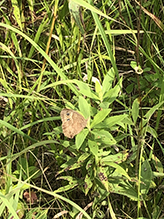 |
Tom Baker |
||
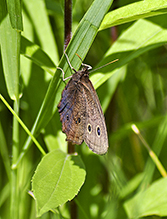 |
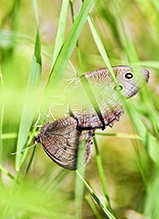 |
|
MinnesotaSeasons.com Photos |
||
| Light form with hindwing spots |
|
|
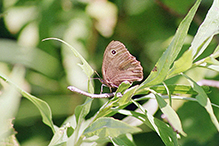 |
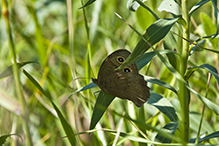 |
|
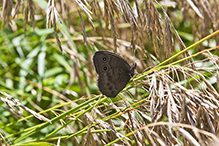 |
||
Light form with no hindwing spots |
||
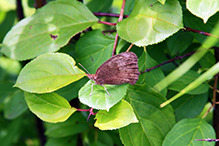 |
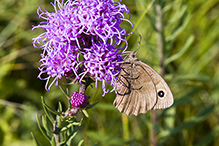 |
|
Dark form |
|
|
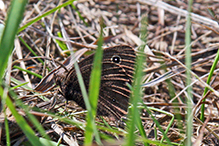 |
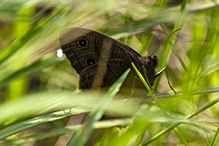 |
|

Slideshows |
Common Wood Nymph |
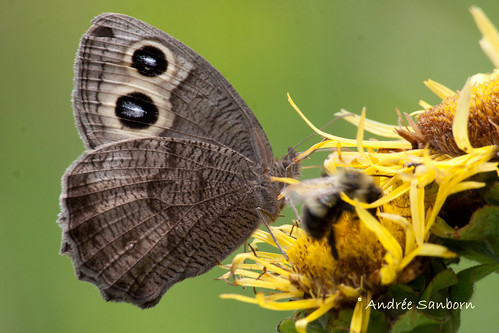
|
About
Cercyonis pegala |
Cercyonis pegala (Common Wood-Nymph) |
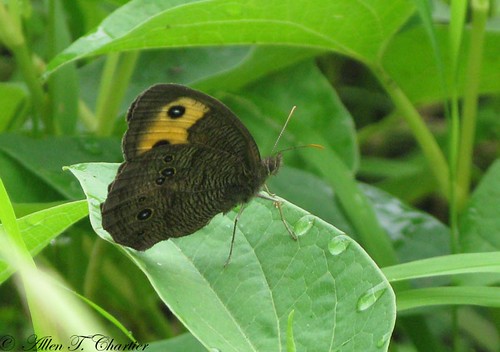
|
Common Wood-Nymph |
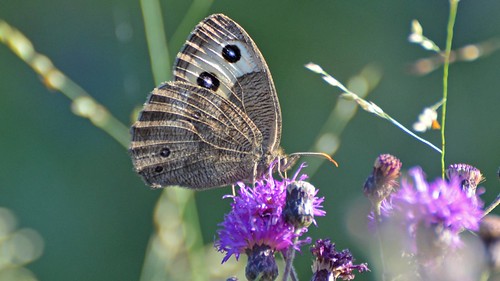
|

visitor videos |
||
Share your video of this insect. |
||
This button not working for you? |
||
Nancy Falkum |
common wood nymph 01 |
About
Oronoco Prairie SNA |
Other videos |
||
Common Wood Nymph (Nymphalidae: Cercyonis pegala) on Leaf |
About
Uploaded on Aug 11, 2010 Photographed at the Rydell NWR, Minnesota (10 August 2010). Go here to learn more about this species: http://minnesotaseasons.com/Insects/common_wood_nymph.html. |
Common Wood Nymph (Nymphalidae: Cercyonis pegala) on Blossom |
About
Uploaded on Aug 1, 2010 Photographed at Kelly Slough NWR, North Dakota (31 July 2010). Go here to learn more about this species: http://minnesotaseasons.com/Insects/common_wood_nymph.html. |
Common Wood-Nymph |
About
Published on Aug 5, 2012 Birds Hill Park,Manitoba |

visitor Sightings |
||
Report a sighting of this insect. |
||
This button not working for you? |
||
Nancy Falkum |
Location: Oronoco Prairie SNA |
 |
MinnesotaSeasons.com Sightings |
||

Created: 10/7/2005 Last Updated: © MinnesotaSeasons.com. All rights reserved. |
